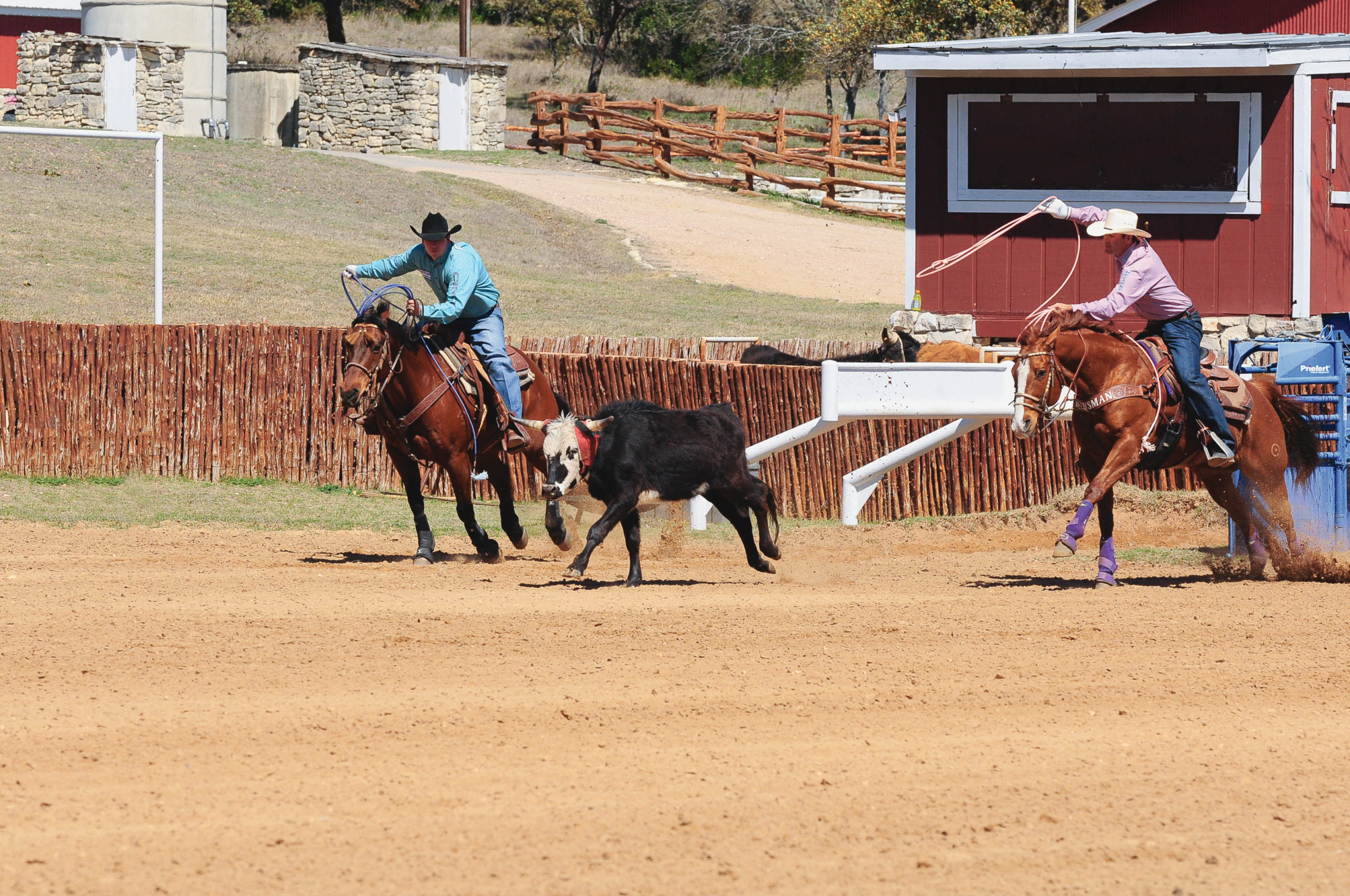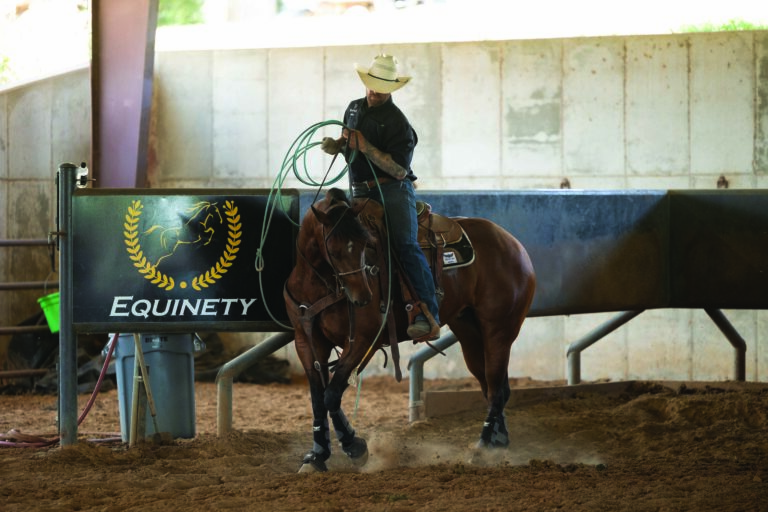
I’m a big believer in exercising my good horses every day: trotting them and loping them to keep them in shape. I don’t necessarily like to rope on them every day. I’ve got practice horses if I need to run a lot of steers. These good ones, where I’m trying to make a living, I want to keep them in tip-top shape and ready to go at all times. I’m not a horse-walker guy. I think it’s good if you’re on their backs with bits in their mouths, riding them and working them a little bit. I like to be on my good ones and feeling them, just so I can know if they’re a little sore or anything is out of the ordinary. We ride them most days, if I can’t ride them, my wife will.
[LISTEN: The Score Team Roping Podcast: Season 2, Episode 14 with Clay Tryan]
[Read More: Right-Hand Circle Drill with Clay Tryan]
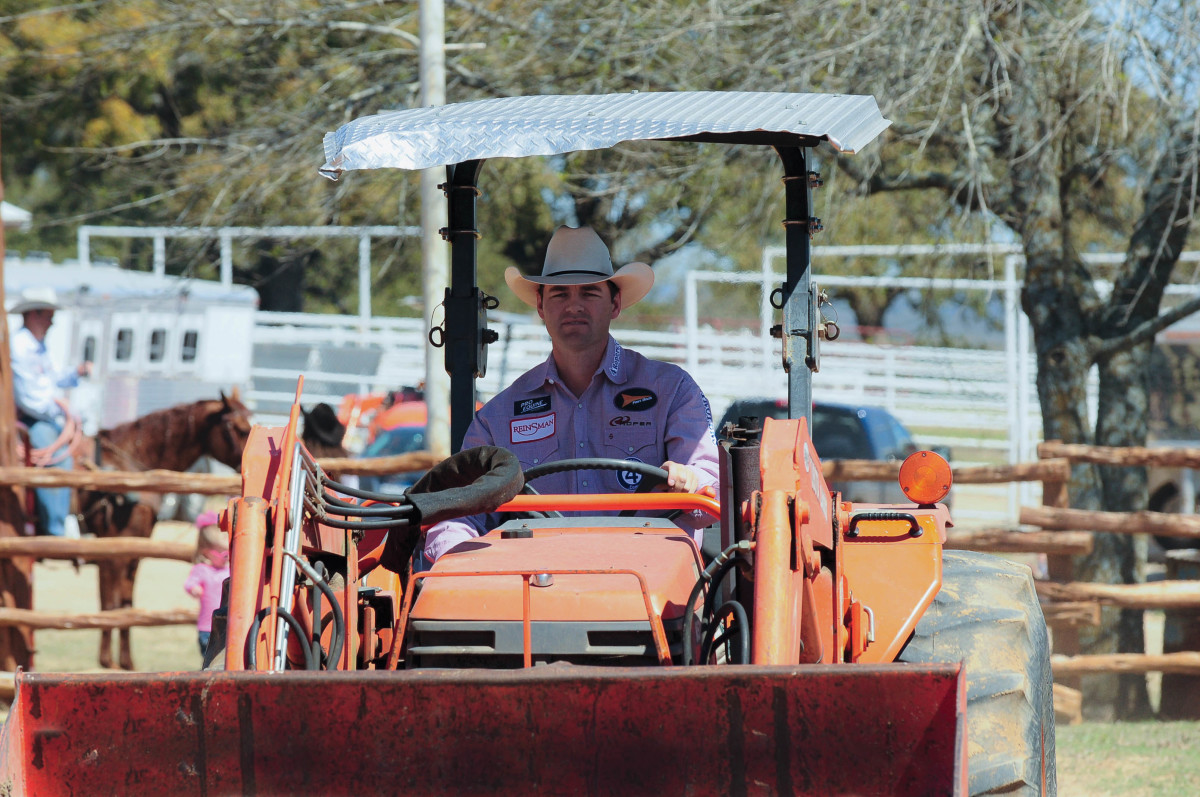
I think keeping your arena groomed and in the right shape is important. Every time I get on my good horses, I drag it flat. I water it to keep where the footing is not loose, it’s nice and packed a little bit. At my house in Texas, it’s good to keep it flat. If it gets too deep, it can be hard on their tendons. I don’t think you want the top surface any more than two- to three-inches deep. You don’t want it hard underneath and you don’t want it a foot deep that they have to struggle to get through it. I work my arena probably three times per practice session. If somebody is there, I might work it more. I’m big on keeping the ground flat.
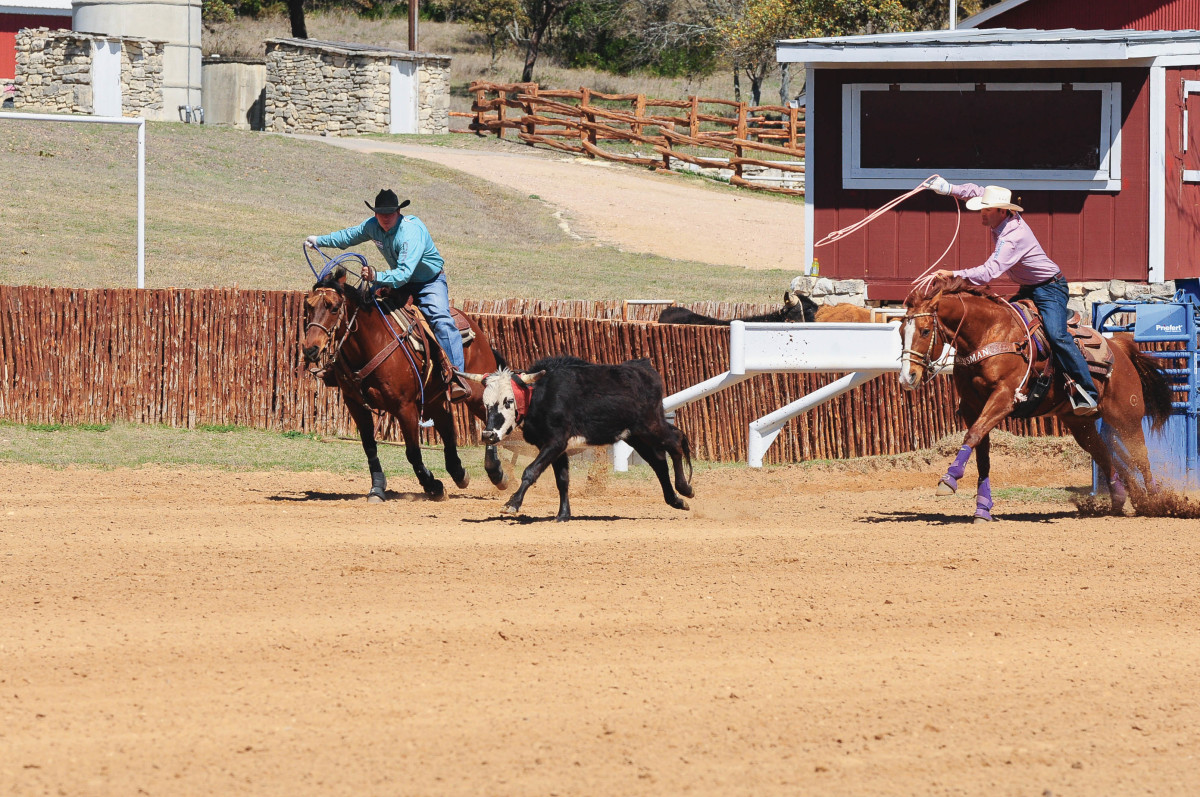
[READ MORE: Keeping Your Head Horse Working with Clay Tryan]
I’ve been fortunate to have two great head horses the last couple of years. I bought them both around the same time from the same place. I believe one of the things I do good is when I buy a great horse, I don’t try to fix a whole lot on him. I try to maintain him. I thought he was great and that was why I bought him. When I do practice on them—which isn’t a whole lot—I work on them a little. In this picture, this steer is going off to the right. That’s what I like on my good horses, every good horse will go to the left pretty good, but you’ve got to keep them wanting to go to the right and running hard. If you notice, I’m not pulling on the reins, I’m letting her run all the way to the steer. I think some lower-numbered ropers pull and lose their balance. My posture is pretty good, I’m not getting rocked back and I’m not pulling on the reins—I’m just letting her run.
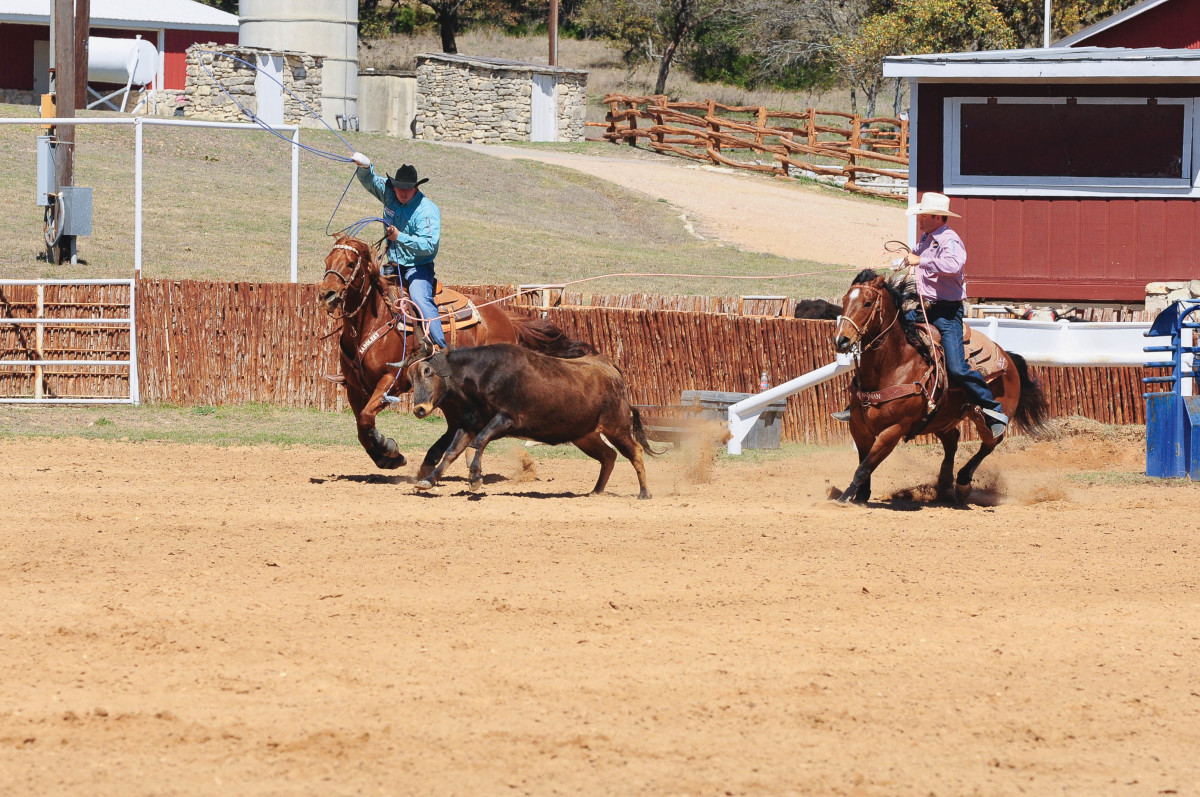
This is another one of my great horses, Dew. I like to start out roping—in no particular order—a few runs real close and holding the steer up and then a few real aggressive. In this run, I roped aggressive so I had a good feel for the horse. You always want to get a feel for your horse in different situations because if all you work on is running in close and freeing them up, if you take them somewhere you need to be aggressive, they may not be. So I was being pretty aggressive.
[READ MORE: Clay Tryan: Stop Splitting Horns]
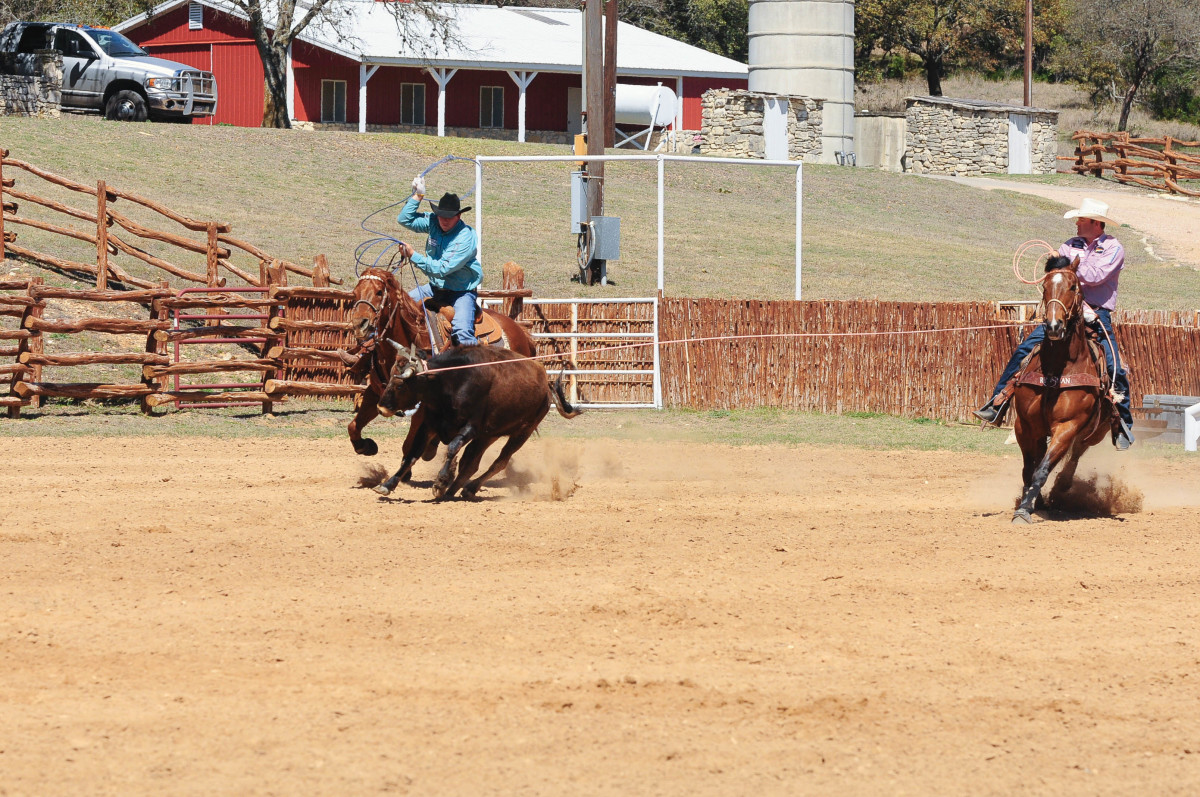
In the next shot, I went from being aggressive to really holding him up. You can see my left hand is crossed, I’m holding him up and slowing him down just so he stays under control and he’s in my hand and listening to what I’m trying to show him to do, which is slow down. It’s good to have control of your horse—especially good ones—because when they’re great and they try hard, they’re at a different level. You don’t have to run as many on them because they’re willing to do it. I just think naturally they’re harder on themselves. Pro athletes get hurt because they try hard and I think it’s the same with a great head horse. You can hurt them if you overuse them. So sometimes I try to make it as easy on them as possible, just run a few and let them enjoy it so they keep trying hard.
[READ MORE: Clay Tryan: When to Go At ’Em and When to Back Off?]




